
The Searchers is a 1956 American Technicolor VistaVision epic Western film directed by John Ford and written by Frank S. Nugent, based on the 1954 novel by Alan Le May. It is set during the Texas-Native American wars, and stars John Wayne as a middle-aged Civil War veteran who spends years looking for his abducted niece, accompanied by his adopted nephew.

Eldred Gregory Peck was an American actor and one of the most popular film stars from the 1940s to the 1970s. In 1999, the American Film Institute named Peck the 12th-greatest male star of Classic Hollywood Cinema.

The Lone Ranger is a fictional masked former Texas Ranger who fought outlaws in the American Old West with his Native American friend Tonto. The character has been called an enduring icon of American culture.
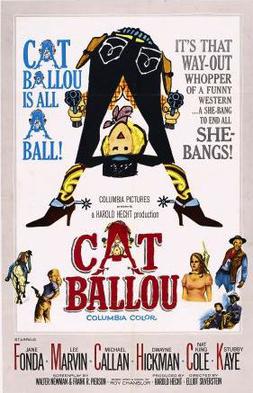
Cat Ballou is a 1965 American western comedy film starring Jane Fonda and Lee Marvin, who won an Academy Award for Best Actor for his dual role. The story involves a woman who hires a notorious gunman to protect her father's ranch, and later to avenge his murder, only to find that the gunman is not what she expected. The supporting cast features Tom Nardini, Michael Callan, Dwayne Hickman, and Nat King Cole and Stubby Kaye, who together perform the film's theme song, and who appear throughout the film in the form of travelling minstrels or troubadours as a kind of musical Greek chorus and framing device.
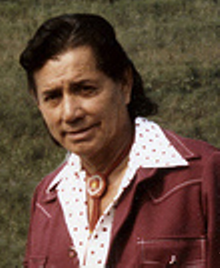
Jay Silverheels was an Indigenous Canadian actor and athlete. He was well known for his role as Tonto, the Aboriginal companion of the Lone Ranger in the American Western television series The Lone Ranger.

Tonto is a fictional character; he is the Native American companion of the Lone Ranger, a popular American Western character created by George W. Trendle and Fran Striker. Tonto has appeared in radio and television series and other presentations of the characters' adventures righting wrongs in 19th-century western United States.

The Legend of the Lone Ranger is a 1981 American Western adventure film directed by William A. Fraker and starring Klinton Spilsbury, Michael Horse and Christopher Lloyd. It is based on the story of The Lone Ranger, a Western character created by George W. Trendle and Fran Striker.

Clayton Moore was an American actor best known for playing the fictional western character the Lone Ranger from 1949 to 1952 and 1953 to 1957 on the television series of the same name and two related films from the same producers.
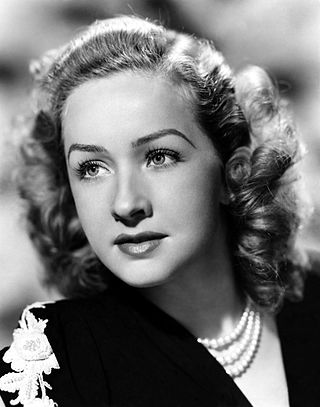
Bonita Gloria Granville Wrather was an American actress and producer.
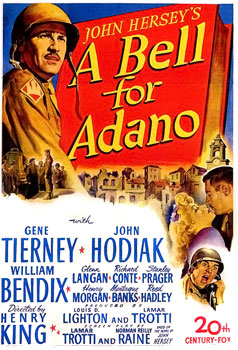
A Bell for Adano is a 1945 American war film directed by Henry King and starring John Hodiak and Gene Tierney. It was adapted from the 1944 novel of the same title by John Hersey, which won the Pulitzer Prize for fiction in 1945. In his review of the film for The New York Times, Bosley Crowther wrote, "... this easily vulnerable picture, which came to the Music Hall yesterday, is almost a perfect picturization of Mr. Hersey's book."
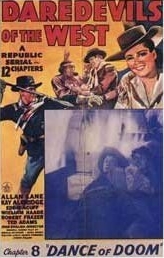
Daredevils of the West is an American Western movie serial consisting of 12 chapters, released by Republic Pictures in 1943 starring Allan Lane and Kay Aldridge. The plot involves a gang of land-grabbers who try to prevent safe passage of the Foster Stage Company through frontier territory. There are similarities of style with other Republic serials released during wartime, such as King of the Mounties and The Masked Marvel.

The Miracle Worker is a 1962 American biographical film about Anne Sullivan, blind tutor to Helen Keller, directed by Arthur Penn. The screenplay by William Gibson is based on his 1959 play of the same title, which originated as a 1957 broadcast of the television anthology series Playhouse 90. Gibson's secondary source material was The Story of My Life, the 1903 autobiography of Helen Keller.

Silk Stockings is a 1957 American musical romantic comedy film directed by Rouben Mamoulian and starring Fred Astaire and Cyd Charisse. It is based on the 1955 stage musical of the same name, which had been adapted from the film Ninotchka (1939). The film was choreographed by Eugene Loring and Hermes Pan.

The Chocolate Soldier is a 1941 American musical film directed by Roy Del Ruth. It uses original music from the Oscar Straus 1908 operetta of the same name, which was based on George Bernard Shaw’s 1894 play Arms and the Man. Unable to come to terms with Shaw, the studio used a story to which it already had rights: the Ferenc Molnár play The Guardsman,. The plot centers on the romantic misunderstandings and professional conflicts between two recently married opera singers, played by Metropolitan Opera star Risë Stevens and Nelson Eddy, who perform excerpts from the operetta during the film. This screenplay was written by Leonard Lee and Keith Winter. The Guardsman—a huge hit on Broadway in 1924— was brought to the screen in 1931, with Alfred Lunt and Lynn Fontanne reprising their stage roles as married actors.
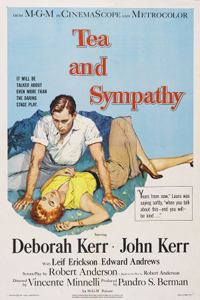
Tea and Sympathy is a 1956 American drama film and an adaptation of Robert Anderson's 1953 stage play of the same name directed by Vincente Minnelli and produced by Pandro S. Berman for MGM in Metrocolor. The music score was by Adolph Deutsch and the cinematography by John Alton. Deborah Kerr, John Kerr and Leif Erickson reprised their original Broadway roles. Edward Andrews, Darryl Hickman, Norma Crane, Tom Laughlin, and Dean Jones were featured in supporting roles.

The Lone Ranger is an American Western television series that aired on the ABC Television network from 1949 to 1957, with Clayton Moore in the starring role. Jay Silverheels, a member of the Mohawk Aboriginal people in Canada, played the Lone Ranger's Indian companion Tonto.
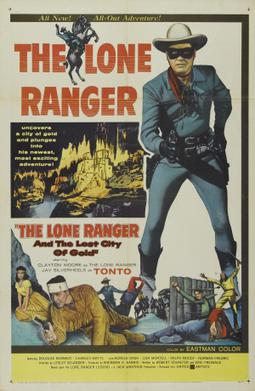
The Lone Ranger and the Lost City of Gold is a 1958 American Western film in Eastmancolor released by United Artists. The second of two theatrical features specifically based on and continuing the TV show The Lone Ranger it stars Clayton Moore and Jay Silverheels, reprising their roles from the TV series. The first feature film was 1956's The Lone Ranger. No further films based on this specific version of the characters were made after this one.
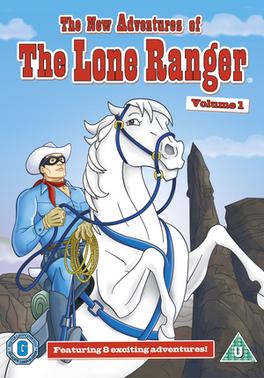
The Lone Ranger is an American animated television series produced by Filmation in 1980. The series ran for 28 episodes over two seasons on CBS as part of The Tarzan/Lone Ranger Adventure Hour.
Milan Smith was an American actor and stuntman. He was known for playing the role of Kyle in the American western television series Rawhide.














